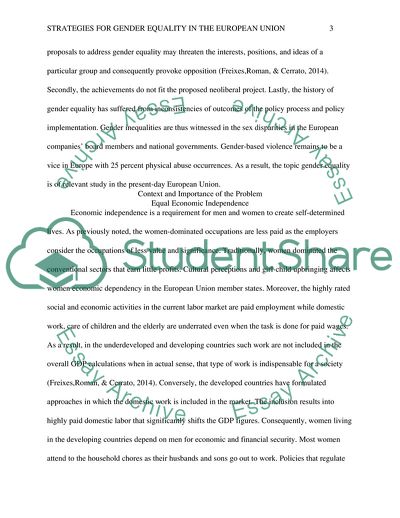Cite this document
(Strategies for Gender Equality in the European Union Coursework Example | Topics and Well Written Essays - 1750 words, n.d.)
Strategies for Gender Equality in the European Union Coursework Example | Topics and Well Written Essays - 1750 words. https://studentshare.org/social-science/1877699-strategy-for-equality-between-women-and-men-in-the-european-union
Strategies for Gender Equality in the European Union Coursework Example | Topics and Well Written Essays - 1750 words. https://studentshare.org/social-science/1877699-strategy-for-equality-between-women-and-men-in-the-european-union
(Strategies for Gender Equality in the European Union Coursework Example | Topics and Well Written Essays - 1750 Words)
Strategies for Gender Equality in the European Union Coursework Example | Topics and Well Written Essays - 1750 Words. https://studentshare.org/social-science/1877699-strategy-for-equality-between-women-and-men-in-the-european-union.
Strategies for Gender Equality in the European Union Coursework Example | Topics and Well Written Essays - 1750 Words. https://studentshare.org/social-science/1877699-strategy-for-equality-between-women-and-men-in-the-european-union.
“Strategies for Gender Equality in the European Union Coursework Example | Topics and Well Written Essays - 1750 Words”. https://studentshare.org/social-science/1877699-strategy-for-equality-between-women-and-men-in-the-european-union.


